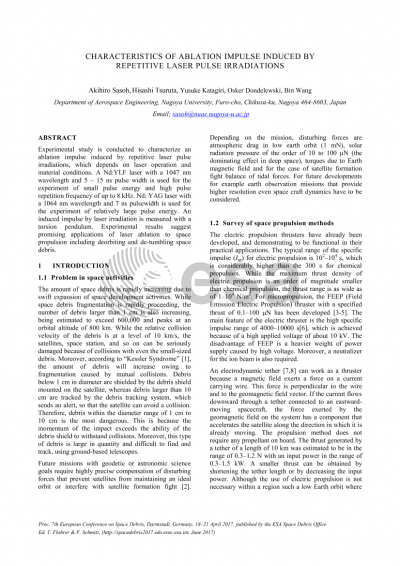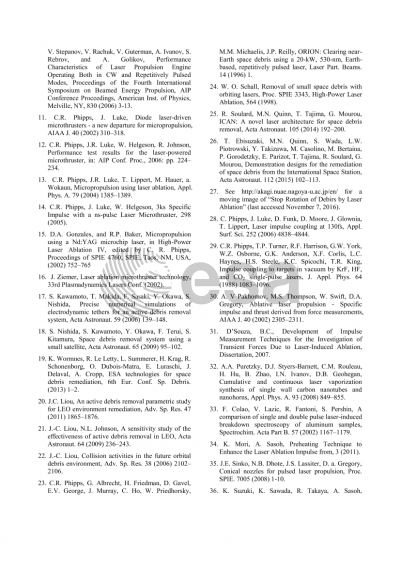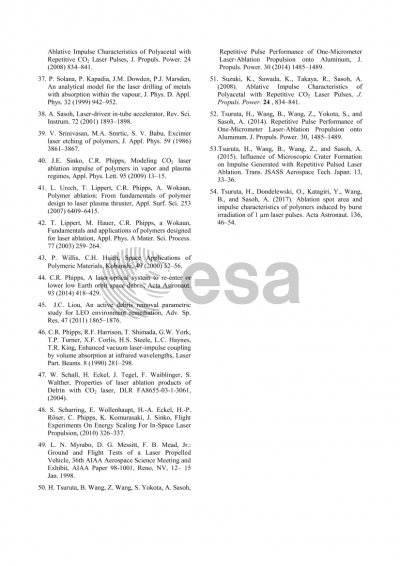Document details

Abstract
Laser ablation is a promising method of space debris deorbiting because of its unique function of remotely generating a momentum. Ebisuzaki et al. proposed a space debris deorbiting system which utilizes EUSO telescope and CAN laser. In spite of advancing basic and application researches, further investigation is necessary. In the present study, characteristics of impulse induced by repetitive pulse laser ablation are experimentally investigated with various ablator geometry and material.
Model experiments were conducted to investigate the effects of ablator geometry on the impulse characteristics. Figure 1 shows geometry of the ablator arrangement. A circular ablator rod made of polyoxymethylene (POM) has a flat head, which is subjected to repetitive laser pulse irradiations. The flat-top section of a collimated TEA CO2 laser beam with a diameter 6 mm, 10.6 ?m wavelength, and 140 ns pulse width (FWHM) is used for the ablation. The ablator rod is 2 mm or 4 mm in diameter, held by an aluminium base with a much larger diameter. The laser beam was collimated using a ZnSe lens with a focal length of 1100 mm, and the surrounding portion of the beam was reflected against the flat surface of the aluminium base without contributing to the impulse generation. The variations of a momentum coupling coefficient, Cm, the ratio of an impulse to an irradiated laser energy, is shown in Fig. 2. When the ablator head extruded above the surface of the aluminium base, the momentum coupling coefficient was 15% larger with the 4 mm diameter rod than that with the 2 mm rod. In the case of 2 mm diameter rod, when the ablator head receded from the surface of the aluminium base down to 2 mm in depth in the hole, Cm is increased by 36%, then becomes saturated. These Cm characteristics are consistent with function of pressure confinement related to the surrounding boundary conditions.
Another series of experiments on laser impulse characteristics of various polymers are currently being conducted. Experimental results are being analysed with reference data obtained with aluminium.
Preview









